15 Ways to Eat More FIber Every Single Day

When you hear the word “fiber,” you probably picture one of two things: your grandma’s tasteless bran muffins, or a creepily joyful cartoon sun double-fisting scoops of raisins.
But fiber doesn’t have to be bland and boring. There are plenty of fiber-filled foods you’ll enjoy eating.
This is super important, because you’re likely not getting nearly enough fiber.
The Academy of Nutrition & Dietetics advises most men aim for 38 grams of fiber, but the exact number varies depending on weight and activity level. In comparison, most guys only get about 15 grams per day.
“There are two types of fiber: soluble and insoluble. Together, these are called ‘dietary fibers,’” says Karolin Saweres, R.D.N., L.D. Soluble fiber has been proven to lower blood cholesterol levels and the risk of heart disease, while insoluble fiber helps to lower the risk of diverticular disease, says Saweres.
Dietary fibers are found in the leaves, stems, and roots of plants. They’re unique because they hang out in your tract for nearly the entire digestive process, which helps keep things regular (yes, we’re talking about poop).
Best of all, eating more fiber can make you feel fuller, longer. That’s because fiber absorbs water and expands in your gut, according to Registered Dietitian Jessica Bachman, PhD, MS-MPH. She says a good source of fiber should provide about 10 percent of your daily recommended intake per serving.
So how do you get all of that in?
“Eat at least one to two servings of [one of] these foods at every meal and include them in all your snacks,” she says.
To make it easy, we’ve compiled a list of 15 high-fiber foods:
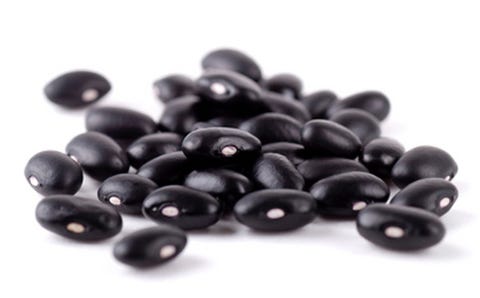
Gallery Stock
Serving size: 1 cup
Fiber: 15 grams
“Black beans are a source of anthocyanins (the compound that gives them the deep purple color),” says Marisa Moore, R.D.N., “which are one of the more active antioxidants that may help reduce the risk of heart disease.” Bonus: they’re a great plant protein.
Moore recommends making them into a black bean burger, or tossing them into salads or atop a grain bowl.
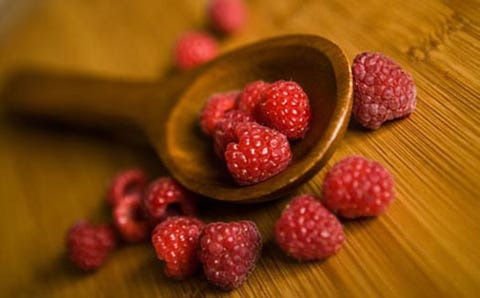
Gallery Stock
Serving size: 1 cup
Fiber: 8 grams
With an added boost of antioxidants and vitamin C, these berries are small but mighty. Add them to yogurt or salads, or enjoy as a stand-alone snack.
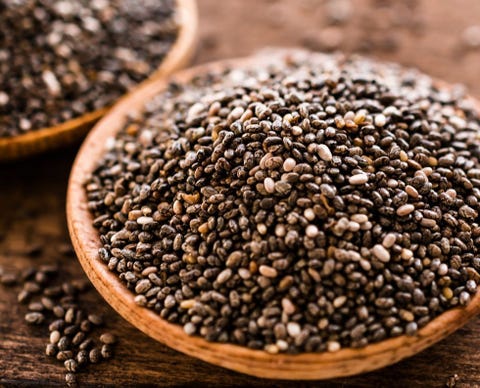
Getty Images
Serving size: 2 tablespoons
Fiber: 8 grams
Kristi King, M.P.H., R.D.N., L.D. recommends sprinkling these super-absorbent seeds into overnight oats, smoothies, salads, yogurt, or adding them as a thickener to hamburgers or meatballs.
“Not only are they a great source of fiber, but they’re a wonderful source of Omega-3 fatty acids, which help overall inflammation,” she says.
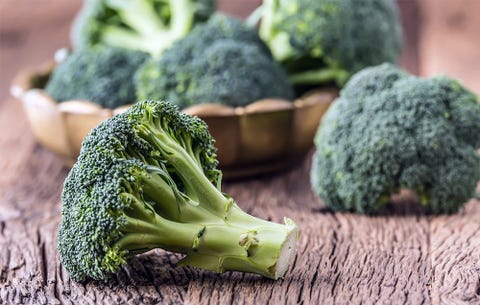
Getty Images
Serving size: 1 cup
Fiber: 5 grams
Broccoli is “low in calories and high in folate, which is protective against GI cancers,” says King. It also contains vitamin K, which is vital to maintaining healthy bones. Eat it as a snack or use as a topper for pizza, baked potatoes, or salads.
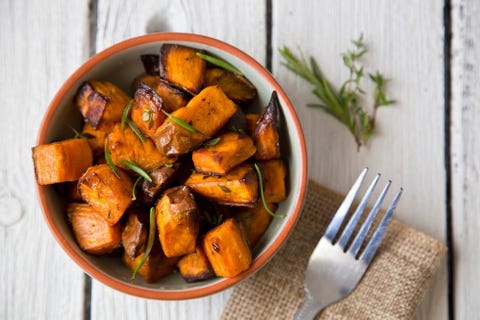
Getty Images
Serving size: 1 cup
Fiber: 4 grams
Sweet potatoes are a good source of calcium, potassium, and vitamins A and C, which helps keep your bones and immune system healthy. Potassium could also help you maintain regular blood pressure, according to the U.S. National Library of Medicine.
Baked some sweet potato fries, or top a potato with almond butter for an easy breakfast.
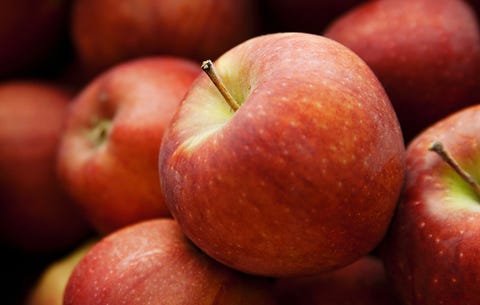
Getty Images
Serving size: 1 medium apple
Fiber: 4 grams
Four grams may not sound like a whole lot of fiber, but like other fruits, apples have the added benefit of containing a ton of vitamin C and antioxidants.
Be sure to eat your apple with the skin on, as it is filled with fiber. Snacking on an apple with peanut butter is an easy and tasty way to make sure you’re including fiber in your diet every day.

Getty Images
Serving size: ½ avocado
Fiber: 5 grams
Although they’re known for their heart-healthy fats, avocados also pack a fiber punch. Not only that, but researchers at Loma Linda University discovered that adding half of an avocado at lunch helped study participants feel more satisfied, according to Moore.
Make guacamole for Taco Tuesday, or add avocado to your salads and sandwiches.

Shutterstock
Serving size: 1 cup
Fiber: 5 grams
Often confused as a grain, quinoa is actually a fiber-and protein-filled seed. “This pseudo-grain boasts five grams of fiber per cup and works as a tasty addition to stir fry, formed into patties or burgers, or as part of a stew,” says Moore. Even better, one serving size also gives you 8 grams of protein.
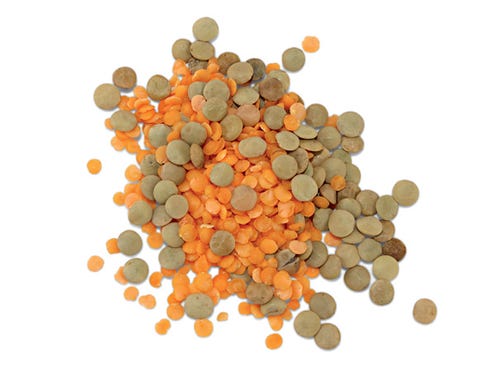
Gallery Stock
Serving size: 1 cup (cooked)
Fiber: 15 grams
Knock out half your daily fiber intake with a single cup of this high-protein pick. “Lentils are a great source of fiber and magnesium,” says McKel Hill, M.S., R.D.N., L.D.N., and Founder of Nutrition Stripped. She recommends trying them in her recipe for Red Lentil Daal with Coconut and Squash.

Silvia Elena Castañeda Puchetta / EyeEm
Serving size: ¼ cup
Fiber: eight grams
Like other legumes, split peas offer a hearty dose of fiber and protein: a quarter cup offers 11 grams of protein. Plus, they’re low in fat but high in folate, potassium and iron. And no, you don’t have to whip up a batch of split pea soup to reap the benefits. Just boil and toss a handful of split peas into a salad, or puree into a healthy tailgate dip.

Djihad Turki / EyeEm
Serving size: 1 cup
Fiber: 7.6 grams
In addition to providing plenty of fiber, blackberries also serve up the antioxidant, anthocyanin, which reduces inflammation in the body and may lower cancer risk. Add them to your oatmeal for an extra fiber boost.

Jose Manuel Espinola Aguayo / EyeEm
Serving size: 1 vegetable
Fiber: 6.8 grams
According to one study by USDA scientists, artichokes have some of the highest levels of antioxidants of all vegetables. They’re also extremely easy to prepare: simply steam and serve as a side dish, or add to salads and whole grain pastas.
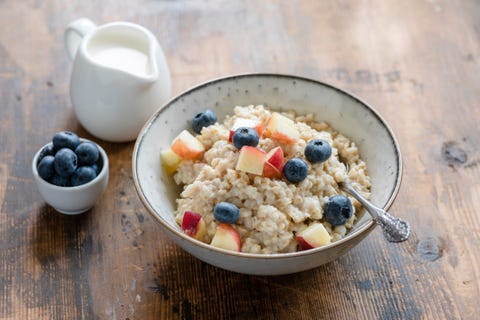
Arx0nt
Serving size: ½ cup dry
Fiber: 3.7 grams
Not only does oatmeal lower LDL, or “bad” cholesterol, but it suppresses appetite, according to Harvard Health. That’s because oats have a specific type of soluble fiber that slows digestion and keeps you full for longer. Stick to your standard overnight oats, or branch out and make a savory version with sautéed vegetables and chicken sausage
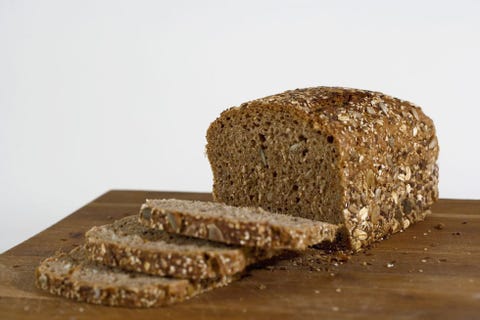
Junior Gonzalez
Serving size: 1 slice
Fiber: roughly 4 grams depending on variety
Bread can be incredible nutritious as long as you pick the brand wisely, according to Registered Dietitian Keri Gans. When purchasing a loaf, she advises choosing varieties made with 100 percent whole grains that have at least three grams of fiber per slice.
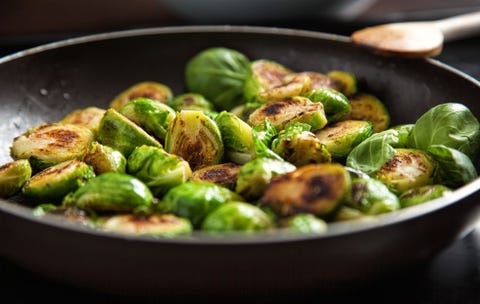
Carsten Schanter / EyeEm
Serving size: 1 cup
Fiber: 4 grams
Not only will eating brussel sprouts help you reach daily fiber goals, but they could reduce prostate cancer risk, too, Men’s Health previously reported. Research shows that cruciferous vegetables, like broccoli, cauliflower and brussels sprouts, contain a natural chemical that may prevent cancer from growing.
Source: Read Full Article
